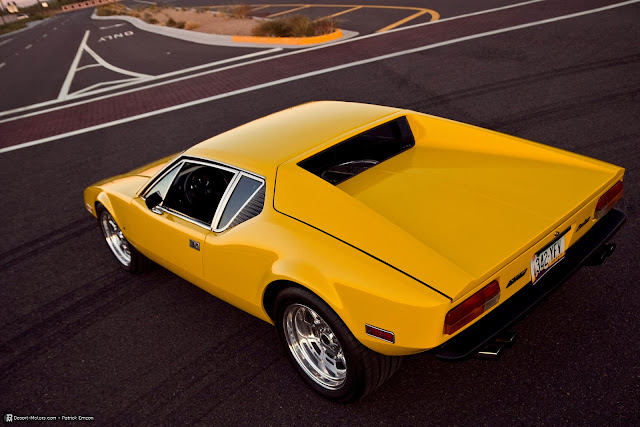'65 GMX Stiletto
With dreams of flying cars as ultimate inspiration, General Motors designers in the 60s used every trick possible to give their creations a floating appearance: long straight bodies, wheels pushed in and hidden away, large fins and lights that looked like rockets. The arrival of William L. Mitchell at the reins of GM Design brought a more high-tech approach, with simpler surfaces, a more restrained use of chrome and a general sense of elegant simplicity.
The result of this new design direction will be unveiled at the 1964 World's Fair in New York where GM presented three futuristic design studies: the Runabout, a three-wheeler commuter vehicle, the Firebird IV, the spiritual successor to the trio of gas-turbine prototypes from the 50s, and the impressive GM-X "Stiletto", a vision of a powerful long cruiser.
Drawn with fresh fastback proportions, the GM-X had a long and thick body, with clean surfaces and sharp edges. An iron-shaped matt black graphic was applied on the bonnet leading to its large pointy nose cone which sticks out like a rocket. During the show, visitors would see the GM-X mounted on brackets, hovering in the air which underlined its futuristic aspirations. The leading edge of the front fenders flowed seamlessly into the window. The same theme was applied at the back with the sharp edges of the rear fenders arching over the rear glass to form the rear edge of the roof.
Way before the Lancia Stratos, the steeply raked windscreen peaked along the centre line and wrapped all the way to the side, eliminating the need for a conventional A-pillar. No wipers either, the glass was coated to be water-repellent. The GM-X had no doors at all. It looked amazing but this was not without creating problems. To get in, passengers had to climb through the rear hatch and pass between the aircraft-style bucket seats.
Once seated, the driver was faced by an accumulation of clocks and meters looking as impressive as the cockpit of a Concorde. A total of 31 indicator lights, 29 toggle switches and 4 control levers were spread between the dash and the roof console. The steering wheel was also replaced by an aircraft-inspired handle. Inside you could also find automatic climate control, ultrasonic obstacle sensors, rear view cameras, and a three-way speaker for inside/outside communication. The latter doesn't sound very useful a part from the chance to shout directly at bad fellow drivers.
The GM-X was extremely well received and when the show ended, it was moved into long-term storage. Surprisingly, five years later GM resurrected the Stilletto by giving it a new sleek nose and a fresh silver paint job. The car would then be branded Pontiac and renamed Cirrus. It was put back on show duty until the end of 1970, when it still looked futuristic despite its seven years of age. The car finally came back to storage where it retired peacefully until a cold-hearted house cleaning in the early 80s sent it to the crusher.
Subscribe to:
Posts (Atom)



















































